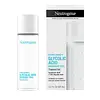What's inside
What's inside
 Key Ingredients
Key Ingredients

 Benefits
Benefits

 Concerns
Concerns

 Ingredients Side-by-side
Ingredients Side-by-side

Water
Skin ConditioningButylene Glycol
HumectantCellulose
AbsorbentCarbomer
Emulsion StabilisingIsostearamidopropyl Ethyldimonium Ethosulfate
Propylene Glycol
HumectantGluconic Acid
Mandelic Acid
AntimicrobialLactobionic Acid
BufferingArginine
MaskingSodium Hyaluronate
HumectantHydrolyzed Collagen
EmollientMoringa Oleifera Seed Oil
EmollientArgania Spinosa Kernel Oil
EmollientAdansonia Digitata Seed Oil
EmollientAloe Barbadensis Leaf Extract
EmollientHydrolyzed Viola Tricolor Extract
Skin ProtectingSodium Hydroxide
BufferingSodium Hyaluronate Crosspolymer
Humectant1,2-Hexanediol
Skin ConditioningSqualene
EmollientPropanediol
SolventCaprylyl Glycol
EmollientEthylhexylglycerin
Skin ConditioningPhenoxyethanol
PreservativeSodium Chloride
MaskingDisodium EDTA
Water, Butylene Glycol, Cellulose, Carbomer, Isostearamidopropyl Ethyldimonium Ethosulfate, Propylene Glycol, Gluconic Acid, Mandelic Acid, Lactobionic Acid, Arginine, Sodium Hyaluronate, Hydrolyzed Collagen, Moringa Oleifera Seed Oil, Argania Spinosa Kernel Oil, Adansonia Digitata Seed Oil, Aloe Barbadensis Leaf Extract, Hydrolyzed Viola Tricolor Extract, Sodium Hydroxide, Sodium Hyaluronate Crosspolymer, 1,2-Hexanediol, Squalene, Propanediol, Caprylyl Glycol, Ethylhexylglycerin, Phenoxyethanol, Sodium Chloride, Disodium EDTA
Ingredients Explained
These ingredients are found in both products.
Ingredients higher up in an ingredient list are typically present in a larger amount.
Arginine is an amino acid that is important for human development. Your body uses is it to produce hair keratin and skin collagen.
As a cosmetic ingredient, Arginine has antioxidant properties and can also help repair damaged skin. This ingredient is derived either synthetically or from animals.
Arginine isn't fungal acne safe when used in the presence of other lipids (fats, fatty acids, oils, esters, etc). Oils and fats occur naturally within the skin, so take caution when using Arginine if you're prone to fungal acne.
Learn more about ArginineCaprylyl Glycol is a humectant and emollient, meaning it attracts and preserves moisture.
It is a common ingredient in many products, especially those designed to hydrate skin. The primary benefits are retaining moisture, skin softening, and promoting a healthy skin barrier.
Though Caprylyl Glycol is an alcohol derived from fatty acids, it is not the kind that can dry out skin.
This ingredient is also used as a preservative to extend the life of products. It has slight antimicrobial properties.
Learn more about Caprylyl GlycolDisodium EDTA plays a role in making products more stable by aiding other preservatives.
It is a chelating agent, meaning it neutralizes metal ions that may be found in a product.
Disodium EDTA is a salt of edetic acid and is found to be safe in cosmetic ingredients.
Learn more about Disodium EDTAPropanediol is an all-star ingredient. It softens, hydrates, and smooths the skin.
It’s often used to:
Propanediol is not likely to cause sensitivity and considered safe to use. It is derived from corn or petroleum with a clear color and no scent.
Learn more about PropanediolSodium Hyaluronate is hyaluronic acid's salt form. It is commonly derived from the sodium salt of hyaluronic acid.
Like hyaluronic acid, it is great at holding water and acts as a humectant. This makes it a great skin hydrating ingredient.
Sodium Hyaluronate is naturally occurring in our bodies and is mostly found in eye fluid and joints.
These are some other common types of Hyaluronic Acid:
Learn more about Sodium HyaluronateSodium Hydroxide is also known as lye or caustic soda. It is used to adjust the pH of products; many ingredients require a specific pH to be effective.
In small amounts, sodium hydroxide is considered safe to use. However, large amounts may cause chemical burns due to its high alkaline.
Your skin has a natural pH and acid mantle. This acid mantle helps prevent harmful bacteria from breaking through. The acid mantle also helps keep your skin hydrated.
"Alkaline" refers to a high pH level. A low pH level would be considered acidic.
Learn more about Sodium HydroxideWater. It's the most common cosmetic ingredient of all. You'll usually see it at the top of ingredient lists, meaning that it makes up the largest part of the product.
So why is it so popular? Water most often acts as a solvent - this means that it helps dissolve other ingredients into the formulation.
You'll also recognize water as that liquid we all need to stay alive. If you see this, drink a glass of water. Stay hydrated!
Learn more about Water